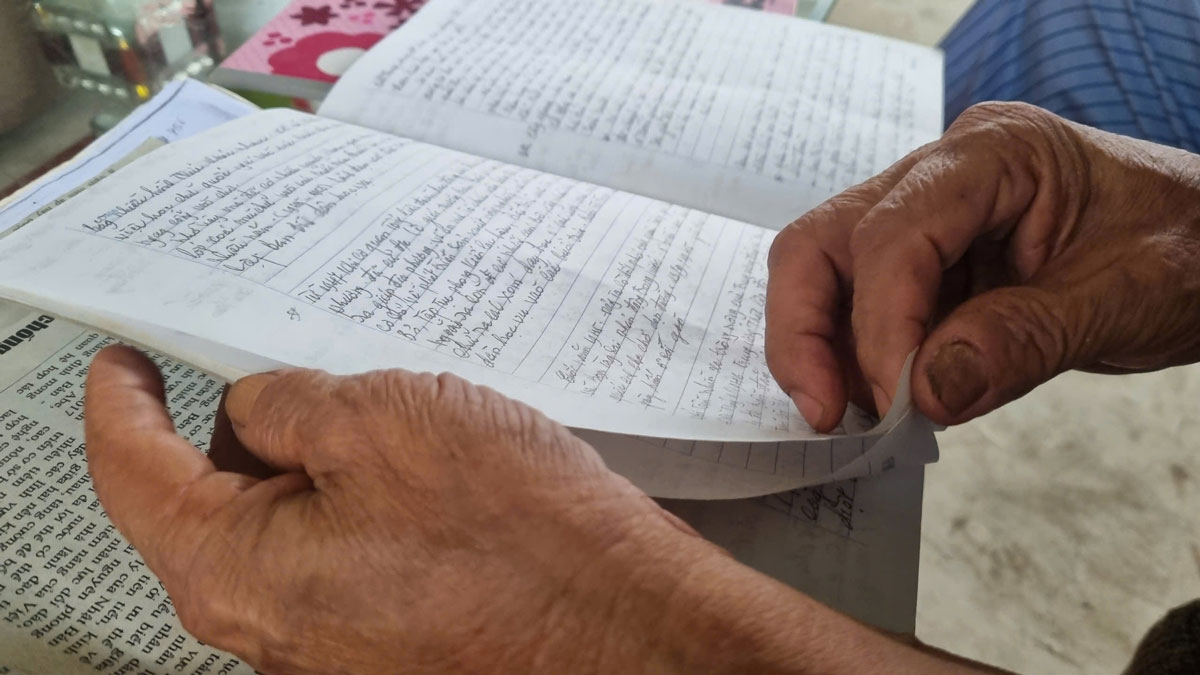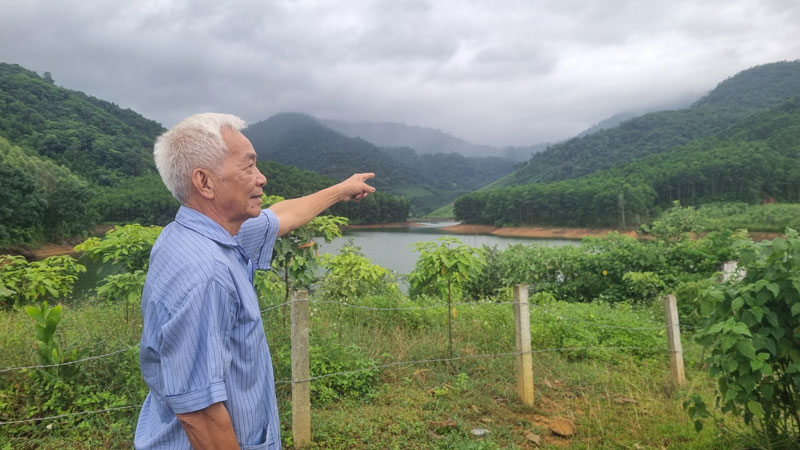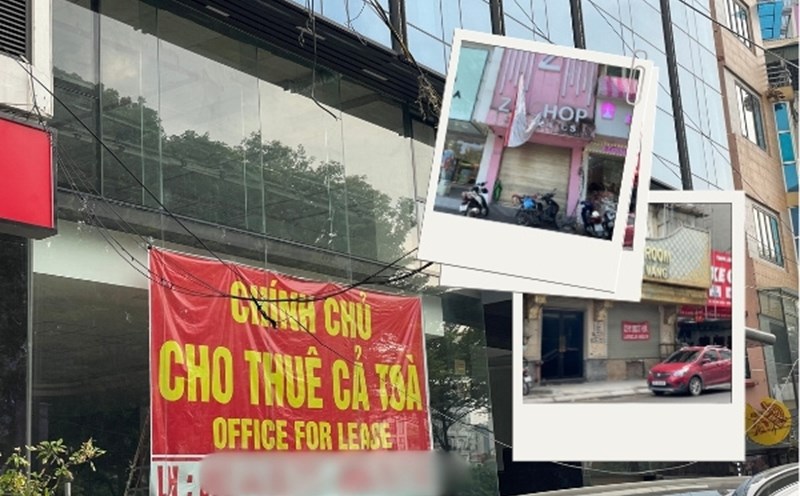Where to print Lao Dong Newspaper's stamp
In late July, we returned to Phu Xuyen commune (Thai Nguyen province), which is considered the heart of Viet Bac, the Windy Capital, to find the location that once left a strong impression on Lao Dong Newspaper during the revolutionary period of 1947 - 2013.
Following the winding, curving passes, about 35km from the center of Thai Nguyen province is Phu Xuyen commune, formerly known as Cao Van commune. The terrain of Phu Xuyen is rugged, hidden among old forests, surrounded by majestic mountain ranges such as Tam Dao, Di Da mountain, Hong mountain, this place used to be a shield of the Security Zone during the resistance years.
At that time, many important agencies of the Central Government and the Government were located here such as: Agency of the Vietnam General Confederation of Labor, Lao Dong Publishing House, Executive Committee of Lao Dong Newspaper, Post Office Intermediate School, Central Youth Union...
To remember the memories of Lao Dong Newspaper during the years of resistance in the Thousand Winds Capital, we went to the house of Mr. Le Nguyen To - former Secretary of the Phu Xuyen Commune Party Committee. Mr. To was the Commune Secretary from 1995 to 2000. During his tenure, with a strong love for the land of the war zone, he successfully collected stories about historical relics - including images of Lao Dong printing house and the Board of Directors of Lao Dong Newspaper.
Thanks to the enthusiastic guidance of local people, we were able to meet Mr. To. When he was introduced as a reporter for Lao Dong Newspaper, Mr. To enthusiastically welcomed and was always present with the gentle smile of a man nearly 80 years old.
For the former Secretary of the Phu Xuyen Commune Party Committee, the greatest treasure at present is the layer of documents that he carefully collected about the memories of the bomb era. rolling up the documents meticulously wrapped in each ball bag, Mr. Le Nguyen To sadly said: "Most of those who witnessed that time are no longer alive. For 5 years while in office, I collected and recorded in detail each mark of the glorious period according to the stories of my predecessors.
Now it is necessary to keep it so that the descendants can see a golden and glorious time of his father who fought and sacrificed for the country to be today. "
According to Mr. Le Nguyen To, during the resistance war, the entire operating area of the agencies was arranged with a langur with strict guardrails. The activities at that time were top secret to ensure the safety of the revolution. Only people from inside will leave, if people from outside approach, they will be arrested immediately.

In the document collection that Mr. To considered a treasure, there is a section stating: "The Board of Directors (now the Editorial Board) of Lao Dong Newspaper was initially built in Cay Sau area, Diem hamlet. To get to the printing house, you have to walk through the forest for about 30 minutes - 1 hour.

According to Mr. Luong Quang Thom, in 1947, Lao Dong printing house returned to the commune, with Mr. Tiep as Director. After a period of building the camps, the above agencies moved to the Go Dau, Dam Lung, Dat Luong, Vai Bang - Tam Dao mountain foot. This is also the birthplace of the first newspaper in the resistance years".
Heroic memories of a time of bombs and bullets
After showing us the documents marking the image of Lao Dong Newspaper in the battlefield, Mr. Le Nguyen To enthusiastically guided the reporter to the location where the Lao Dong Newspaper printing house was located.
Regarding the old forest, Mr. To said: "Now there are only the lands where the printing house is located, the traces have been lost to time. The terrain was once located deep in the forest, now surrounded by a dam. About 2km from the Lao Dong Newspaper printing house is the Lao Dong Newspaper Management Board".

According to Mr. Le Nguyen To, the keeper of Lao Dong newspaper, the first issue printed in the battlefield, Mr. Luong Van Dong (old Yen Lang commune, now Phu Xuyen commune), Mr. Dong has passed away, an agency in the history books has come to ask for this newspaper to come and display.
"At that time, it was very difficult, there was a lack of food and means to say about travel, but the staff and reporters of the newspaper still stuck to the forest and mountains to write. Because of the wartime, there were almost only reporters who were collaborators, with 2 or 3 newspapers each, and all of them were real-life articles, carrying the breath of life, recording events that took place at the present time," Mr. To recalled.
In Mr. To's memory, Lao Dong Newspaper reporters have repeatedly recounted that each business trip can take a dozen days, having to bring rice and travel dozens of kilometers through the forest with just one foot. At that time, despite the difficulties, the reporters were always resilient, respected by everyone, and helped by the people. At that time, General Secretary Truong Chinh still frequently visited the area where Lao Dong Newspaper was published.
According to Mr. To, in 1947 his family moved near the mountain stream to live. Later, a hut near the newspaper store moved out of the printing house. After being printed, the reports are sent to people's homes before the Central Traffic Committee comes to receive and send them everywhere.
One of the most difficult things during this period is forest rain and flash floods. The kitchens of the General Confederation of Labor and the imprint of Lao Dong Newspaper were also washed away, and many of the food supplied by the people were also washed away by the water.
During that period, the type-olds printed on water-absorbing borage paper, 16 pages with a frame of 30 x 35cm. The lines of newspaper names, card names, columns, and carvings are printed according to wood engravings. On the title ( Mangrest) under the name of Lao Dong Newspaper, there is a bold line: Resistance propaganda agency of the Vietnam General Confederation of Labor. Two-month period.
According to Mr. Le Nguyen To, such a hard period of resistance that Lao Dong Newspaper still operated, printing newspapers to travel across the country is extremely meaningful. It was the newspaper that contributed its voice and created strength for the people at that time.









